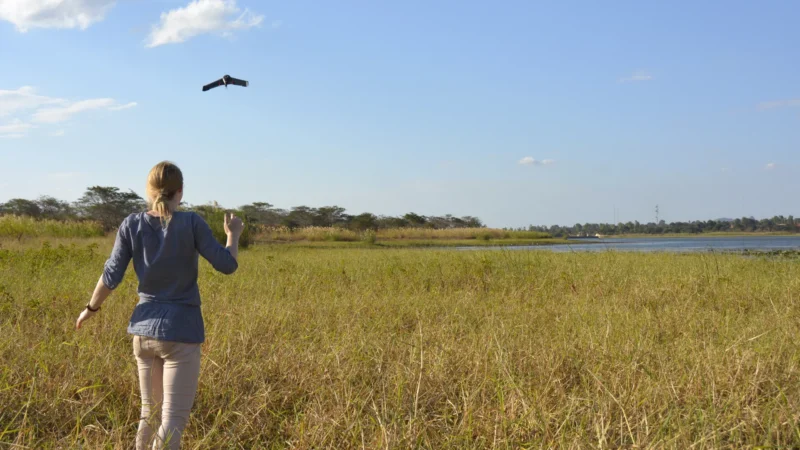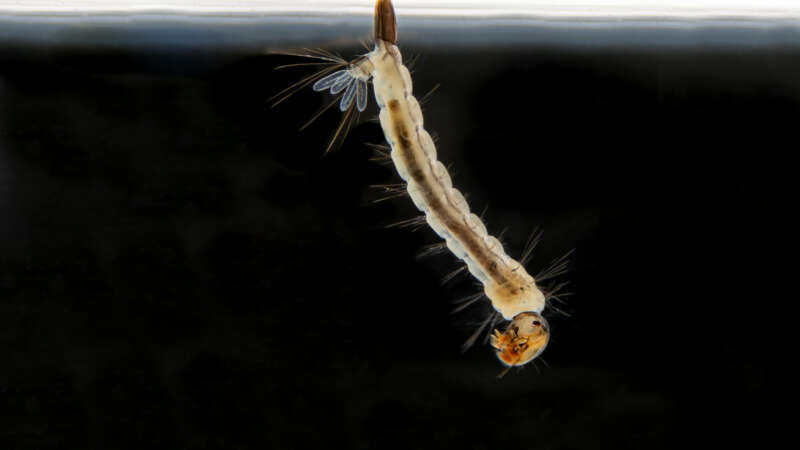Mosquito larvae
Drones vs. Mosquitoes: Fighting malaria in Malawi
In the middle of a muddy field next to a reservoir in north-western Malawi, a team of scientists are hard at work. Boxes of equipment lie scattered around a patch of dry ground, where a scientist programmes an automated drone flight into a laptop perched on a metal box. The craggy peak of Linga Mountain (‘watch from afar’ in the local language) looms over the lake, casting its reflection in the water.
With a high-pitched whirr of rotor blades, the drone takes off and starts following the shoreline, taking photos as it goes. Once the drone is airborne, the team switch from high-tech to low-tech mode. They collect ladles, rulers and plastic containers and squelch through mud until they reach the water’s edge.
Study: Digitally Managed Larviciding
A new study has found that larval source management (LSM) – treating mosquito breeding habitats – can still be effective in malaria elimination operations, especially with the aid of new digital technologies. LSM has been replaced in Africa by long-lasting insecticidal nets (LLINs) and indoor residual spraying (IRS), but these methods are becoming less effective due to mosquitoes’ growing resistance to insecticides.
“Escaping” Traditional Vector Education
Many mosquito and vector control agencies have found that youth programs are fantastic ways to expand their educational reach. Students are avid learners, are outstanding …
Beyond Catch Basins: Managing Culex Populations
Catch Basins and West Nile Virus Transmission In urban environments, road-side catch basins are common larval habitats of Culex species mosquitoes and important targets of …
Redefining the Problem that is Container Mosquitoes
Breakthroughs in Aedes control show potential for WNv programs, but more study is needed. WALS™ has gained notoriety in the recent past because of its …
Pinellas County Single-brood Trials Yield
Asynchronous, single-brood floodwater mosquitoes present a unique set of challenges in Florida’s Pinellas County. Not only do larvae within the Aedes and Culex populations hatch …

